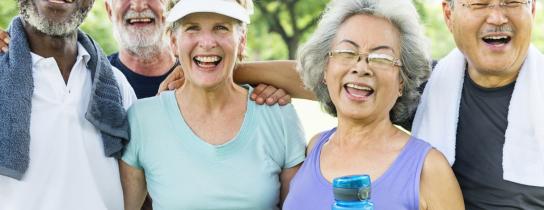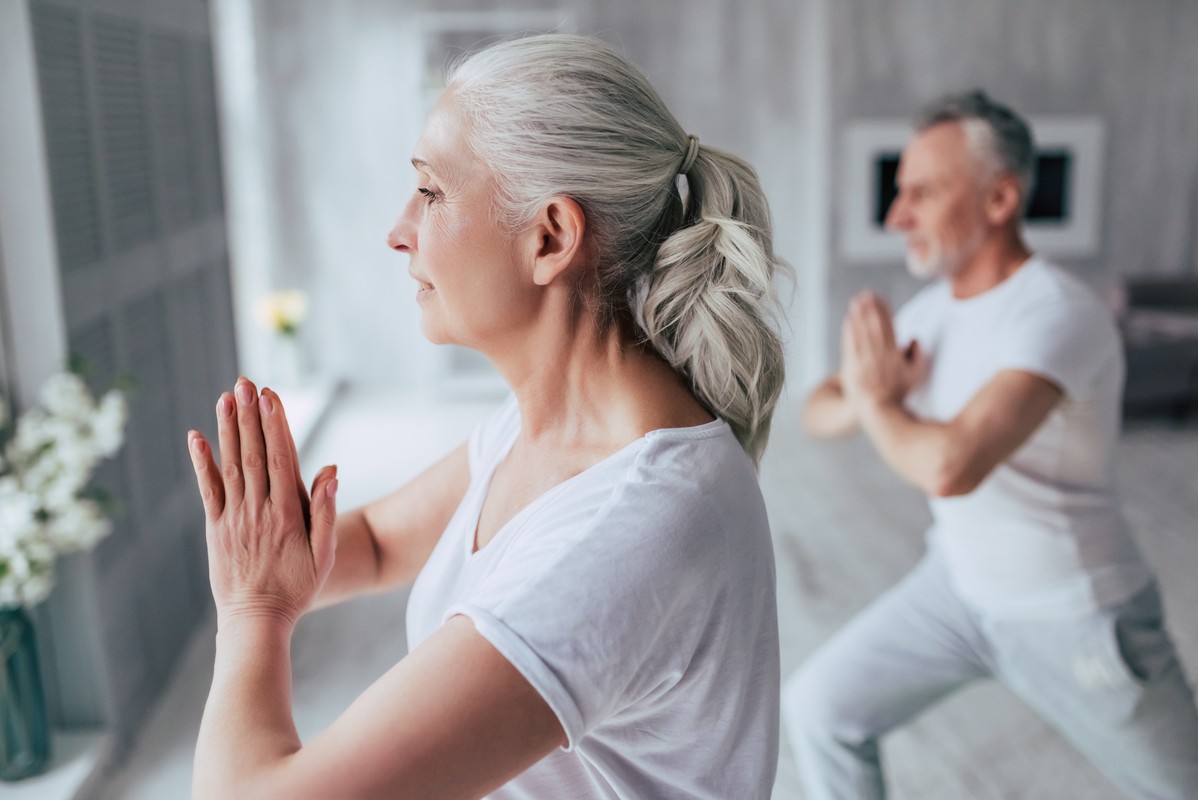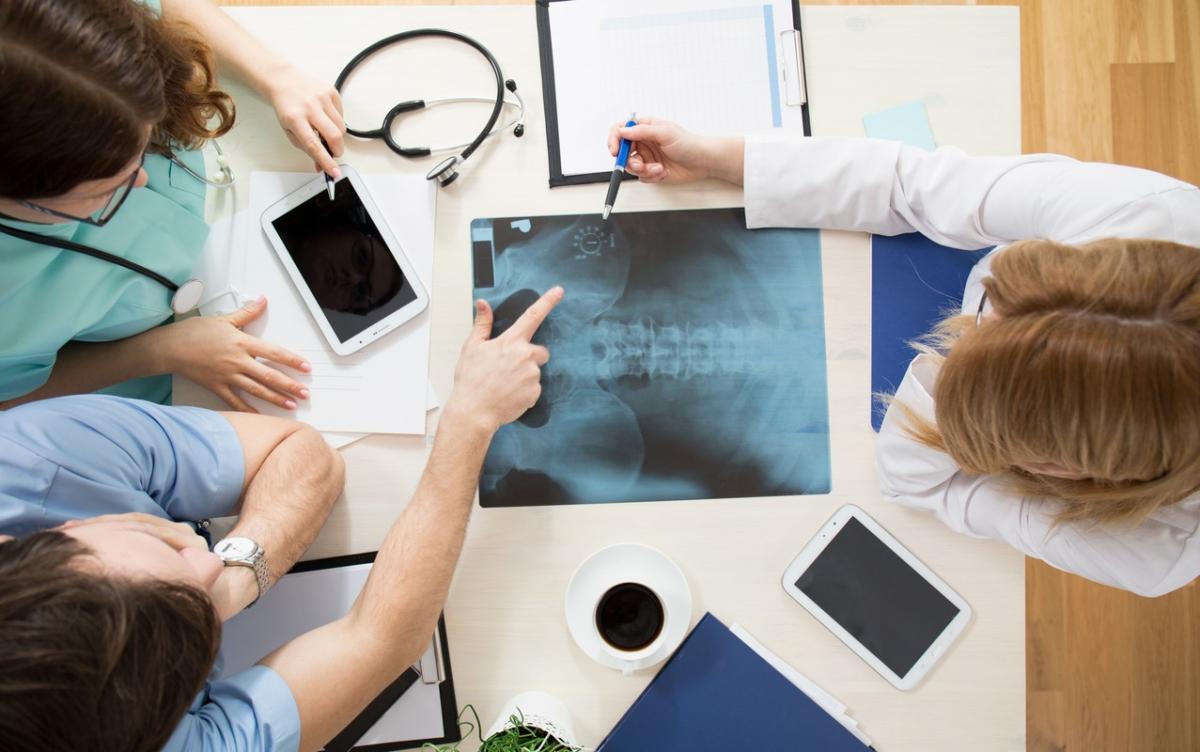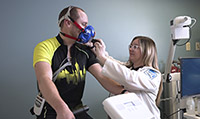
Who Is Most At-Risk for Osteoporosis?
It is estimated that more than 53 million Americans are at high risk for osteoporosis or already have the disease.1 People developing this condition may have porous bones, low bone mass, and a high risk of fractures involving the wrist, hip, and spine. Early osteoporosis treatment can help slow the progression of this disease.
Much research has been done to pinpoint which individuals are most at risk for osteoporosis. If you fall into one of the categories below, you may want to schedule a visit with an endocrinologist for an early evaluation and prevention plan.
Risk Factors for Osteoporosis
Studies suggest that you may be at high risk of this bone disease if one or more of the following factors apply to you.2
- You are age 50 or older with other symptoms – like lower back pain, stooping posture, etc., as bone density begins to decline after it peaks at age 30.
- You have a family history of the disease, easily fractured bones, or the skeletal deformities and stooped posture that might result.
- You have a small frame, slender bones, and a low body weight, leaving you with less bone mass to lose.
- You have low hormone levels, especially low estrogen in women and low testosterone in men.
- Your diet is chronically low in calcium and vitamin D, factors that lead to low bone density.
- You have anorexia nervosa or another disorder that may cause low body weight and malnutrition.
- You have lifestyle factors including inactivity, smoking, or using alcohol excessively.
- You are female, which makes you four times more likely than a male to develop this disease.
- You have a genetic heritage or ethnicity which increases your risk.
Ethnicity and Race Play a Role
The risk of breaking a hip varies based on ethnicity, which may be attributed to variations in bone density seen within these groups. This list shows the relative likelihood of fracturing a hip for women in the United States based on ethnicity, from most likely to least likely:3
- Caucasian (white) women
- Asian women
- African-American women
- Hispanic women
Medications That May Cause Bone Loss
In addition to naturally occurring factors and lifestyle choices, some medications may also cause bone loss and increase your risk of developing osteoporosis. Your bone doctor will help you weigh the benefits against the risks when choosing these medications:4
- Anti-seizure drugs (phenytoin, barbiturates)
- Glucocorticoids used to treat Crohn’s disease, lupus, and other conditions
- Hormone-influencing medications such as GnRH or high doses of thyroid hormones
- Antacids containing aluminum (at high doses for long periods of time)
Can Men Get Osteoporosis?
Men do develop osteoporosis, and the same factors will increase their risk. However, because men start with greater bone density and lose it more slowly if their testosterone levels are normal, men have a much lower risk than women of developing this disease.5
What Causes These Increased Risks?
Bones are formed with the protein collagen, which provides a soft and flexible framework, and the mineral calcium phosphate, which hardens and strengthens the bone. This structure is both strong and flexible. Our bodies replace old bone cells with new ones in a gradual process.
During childhood and our teen years, we add new bone faster than old bone is removed, and our bones grow stronger and thicker. Good nutrition and healthy exercise help us reach peak bone mass in adulthood.
As the body ages, new cells no longer keep pace with the resorption of old tissues and bone mass begins to decline. Individuals whose bone mass never reached peak levels for various reasons, are at a higher risk of osteoporosis as they grow older.4
The Diagnosis, Prevention, and Treatment of Osteoporosis
Osteoporosis is diagnosed by a bone density test, oftentimes following a fracture. Bone density testing is recommended for women age 65 and older but may be performed earlier to diagnose symptoms or establish a baseline. Women with risk factors for osteoporosis (i.e. Vitamin D deficiency, low BMI, hyperparathyroidism) should start screening when they are post-menopausal (1 year without a period). The follow-up interval for screening after the initial screen depends on the initial screen’s findings.
The result of a bone density test is known as a T-score. If the score indicates low bone mass or “osteopenia,” osteoporosis treatment may be started early to help protect bone health.

Taking Steps to Prevent Osteoporosis
Keeping your bones healthy is a key factor in reducing the risks and slowing bone loss. Taking preventative steps now, like quitting smoking or drinking, will protect your bone density as long as possible.
Exercise During All Life Stages
Exercising regularly builds strong bones and muscles and improves balance, which helps prevent falls. Weight-bearing exercise, weight training, and resistance exercises provide the best results. Fun ways to get this kind of benefit include:
- Walking or jogging
- Climbing stairs and inclines
- Hiking
- Playing tennis
- Dancing
- Weight lifting
- Martial arts
Nutrition for Bone Health
Eating a healthy and varied diet that provides essential minerals will protect bone health and will work in conjunction with other treatment options to build or maintain bone density. Most important among the bone-building nutrients are calcium and Vitamin D.
Calcium
With age, the body becomes less able to absorb nutrients and needs higher levels of calcium. Research suggests that most people consume less than half of the recommended amount of calcium, which is at least 1,000 mg/day. After age 50 for women and 70 for men, the recommendation increases to 1,200 mg/day.4
Supplements may be suggested to reach these amounts, but, for the greatest health benefit, these food sources of calcium offer additional vitamins and micronutrients:
- Dairy: Milk, yogurt, cheese, ice cream
- Vegetables: Collards, kale, broccoli, bok choy, spinach, okra
- Fish: Sardines, trout, perch, salmon
- Legumes: Soybeans, soy milk, tofu, tempeh, white beans
- Nuts: Almonds, tahini (sesame seeds)
Vitamin D
Vitamin D can be produced within the body in response to sunshine and is also found in these foods:
- Fatty fish like tuna, salmon, mackerel
- Beef liver
- Cheese
- Egg yolks
- Mushrooms exposed to sunlight, lichens (in supplement form)
Treatment Options for Osteoporosis
The goal of osteoporosis treatment is to stop bone loss and stimulate bone growth in order to prevent fractures and spinal problems. If the disease is in the early stages, lifestyle changes and good nutrition may be enough to reverse bone loss. There are also medications available that can help.
Medications Which Reduce the Risk of Fractures
Your osteoporosis treatment will usually include medications which slow bone loss and/or increase bone density. Some are pills taken on a very specific schedule, and some are delivered by injection, or intravenously.
Your orthopedic specialist will suggest the right combination of medications like these:
- Low-dose estrogen in early stages or as a preventative measure
- Bisphosphonates, which slow bone loss and may increase density
- Raloxifene, similar to estrogen in slowing bone loss but with less effect on breast and uterine tissue
- Teriparatide or abaloparatide, hormones administered as a daily injection, which stimulate the formation of new bone
- Denosumab, which slows the rate at which bone cells break down, increasing bone density over time
- Other new or recently developed medications for the treatment of bone loss
Prevent Falls and Fractures
For those who suffer from osteoporosis, making your home “fall-proof” will help prevent serious fractures. These tips will help start that process:
- In the bathroom, make sure that there are non-skid surfaces and strong handles for stability when getting in and out of the shower or tub.
- Throughout the house, secure loose rugs or replace them with slip resistant, rubber-backed floor coverings.
- Outside, repair steps and railings, improve surfaces with non-skid adhesive strips, and keep surfaces clear of ice, snow, and mud.

Standing Strong Against Bone Loss and Osteoporosis
Bone loss is often a silent disease until a vertebra collapses or a serious fracture happens. Discussing your risk factors with an orthopedic specialist and getting a bone density test if you have any early symptoms will give you the best information about your chances of developing the disease.
While most individuals will experience bone loss due to aging, a diagnosis of early bone loss or osteoporosis will provide the opportunity to make lifestyle changes to promote bone health for the future and protect against debilitating fractures before they happen.
Our orthopedic specialists at Crystal Run Healthcare bring excellence to all they do, working as a team dedicated to your wellbeing. Contact us today to schedule a consultation. With expertise in adults and children, they offer honesty and support that goes beyond treating symptoms and seeks to improve and protect your quality of life through personalized medical care.
Sources:
 Cardiopulmonary Exercise Testing (CPET)
Cardiopulmonary Exercise Testing (CPET) Request medical records online
Request medical records online